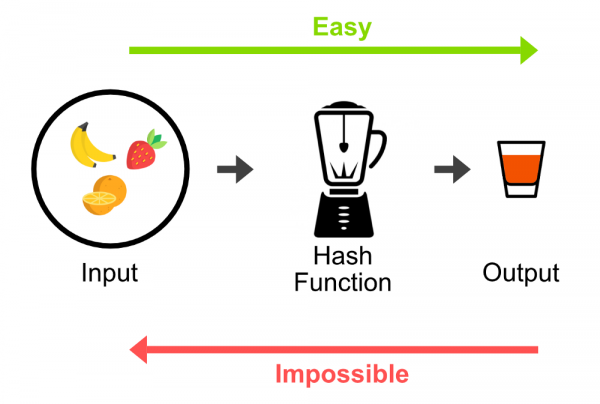One-way function: Difference between revisions
Mr. MacKenty (talk | contribs) (Created page with "<center> <blockquote style="padding: 5px; background-color: #FFF8DC; border: solid thin gray;"> File:Exclamation.png This is student work which has not yet been approve...") |
Mr. MacKenty (talk | contribs) No edit summary |
||
| (One intermediate revision by the same user not shown) | |||
| Line 1: | Line 1: | ||
[[file:computation.png|right|frame|Advanced programming<ref>http://www.flaticon.com/</ref>]] | |||
</ | |||
</ | |||
In computer science, a one-way function is a function that is easy to compute on every input, but hard to invert given the image of a random input.<ref>https://en.wikipedia.org/wiki/One-way_function</ref> | |||
One-way function. One-way functions are easy to compute but it is very difficult to compute their inverse functions. ... One-way functions are key elements of various tools useful in modern cryptography. They are used in pseudorandom generators, authentication of messages and digital signatures.<ref>http://www.crypto-it.net/eng/theory/one-way-function.html</ref> | |||
[[File:One way function.png|600px]] | |||
== References == | == References == | ||
<references /> | |||
[[Category: | [[Category:programming]] | ||
Latest revision as of 19:15, 8 March 2020

Advanced programming[1]
In computer science, a one-way function is a function that is easy to compute on every input, but hard to invert given the image of a random input.[2]
One-way function. One-way functions are easy to compute but it is very difficult to compute their inverse functions. ... One-way functions are key elements of various tools useful in modern cryptography. They are used in pseudorandom generators, authentication of messages and digital signatures.[3]
